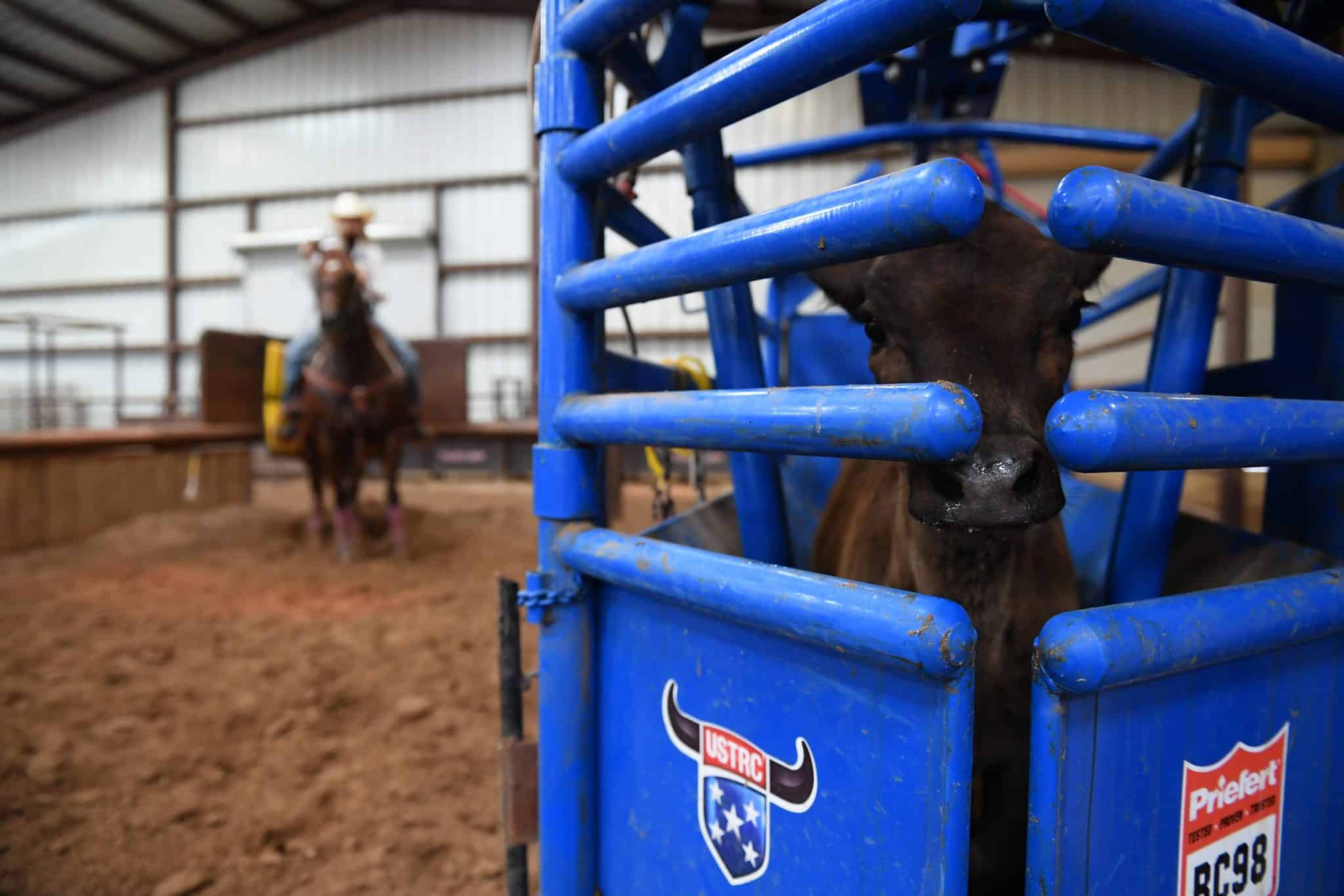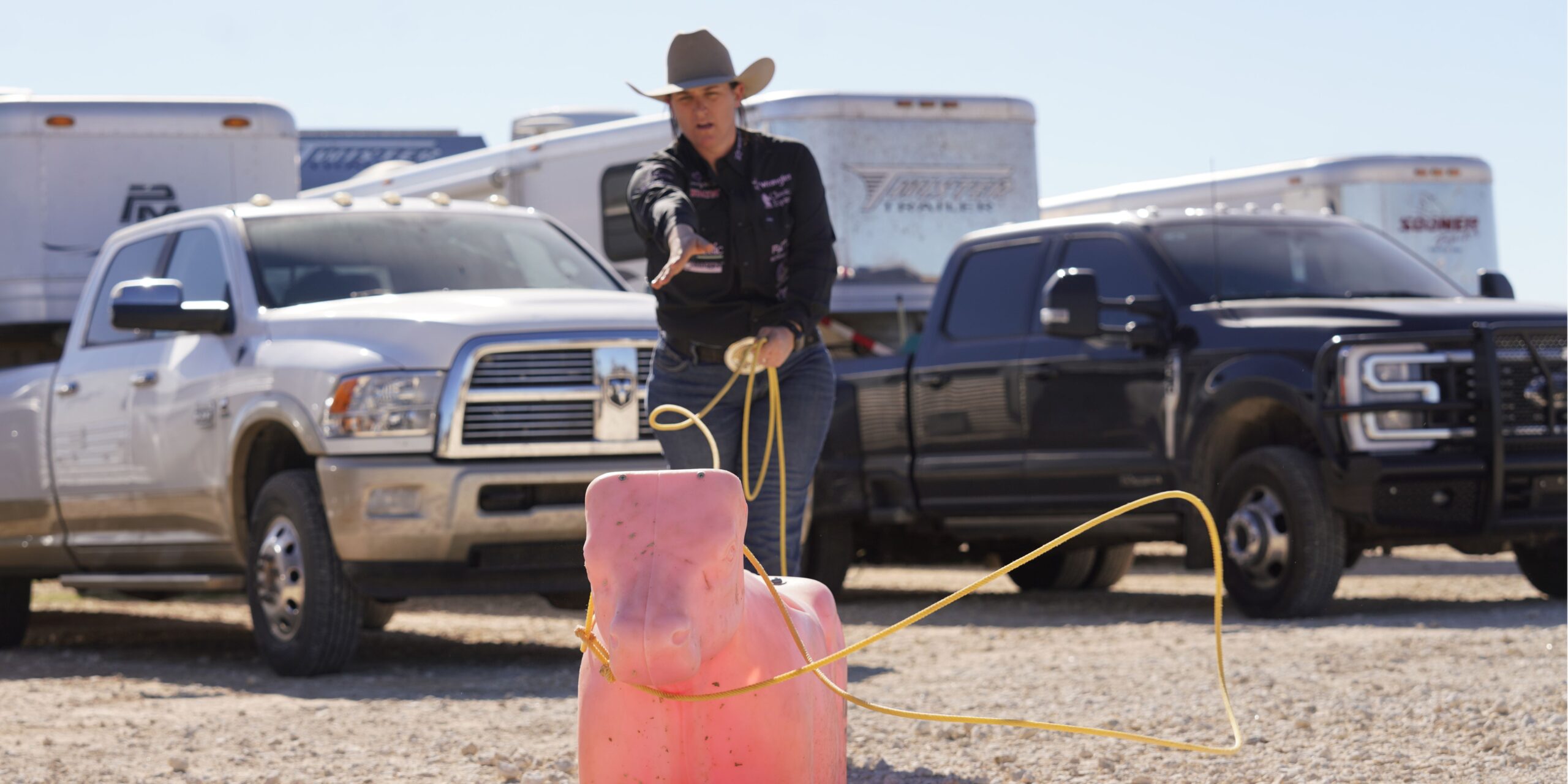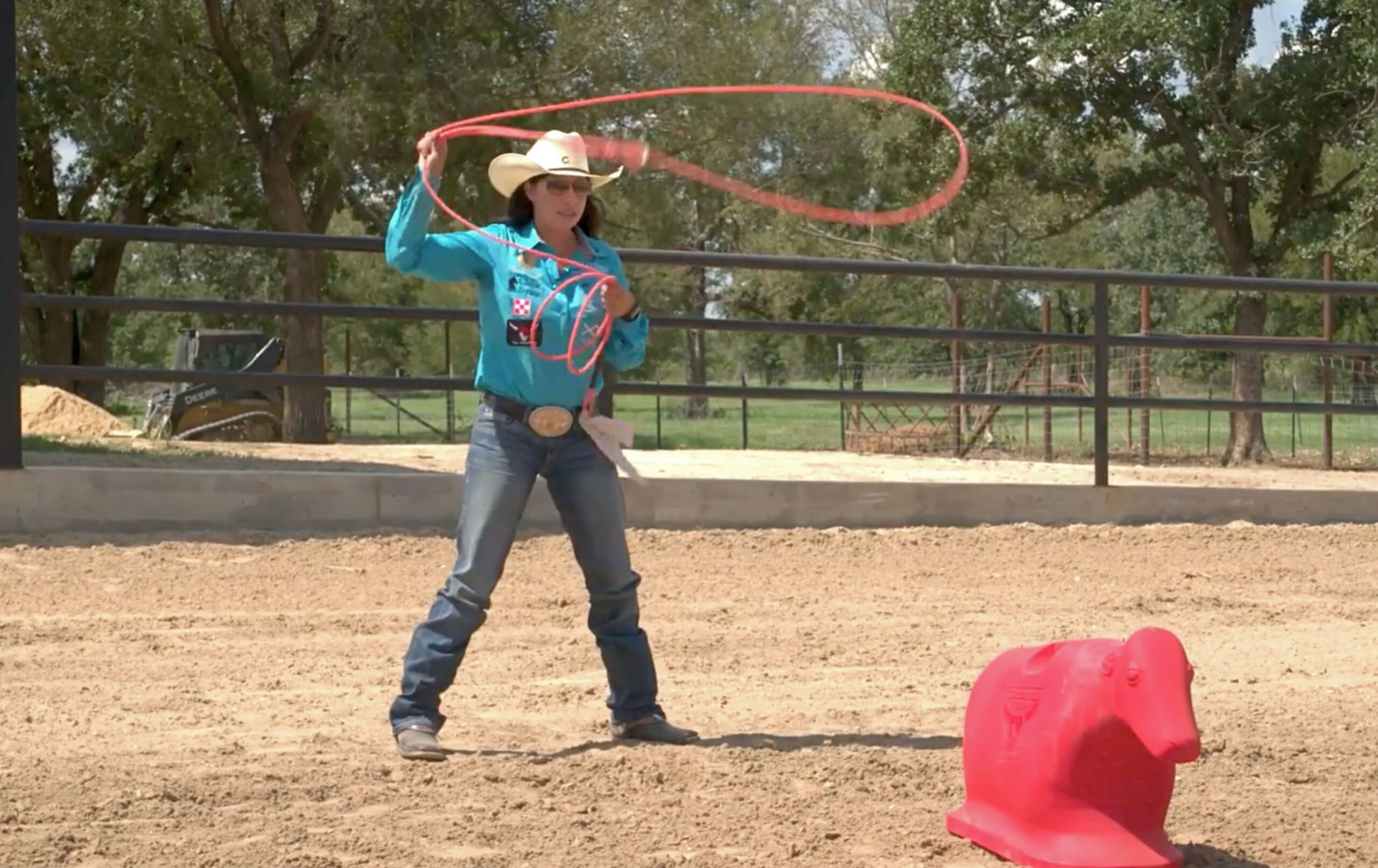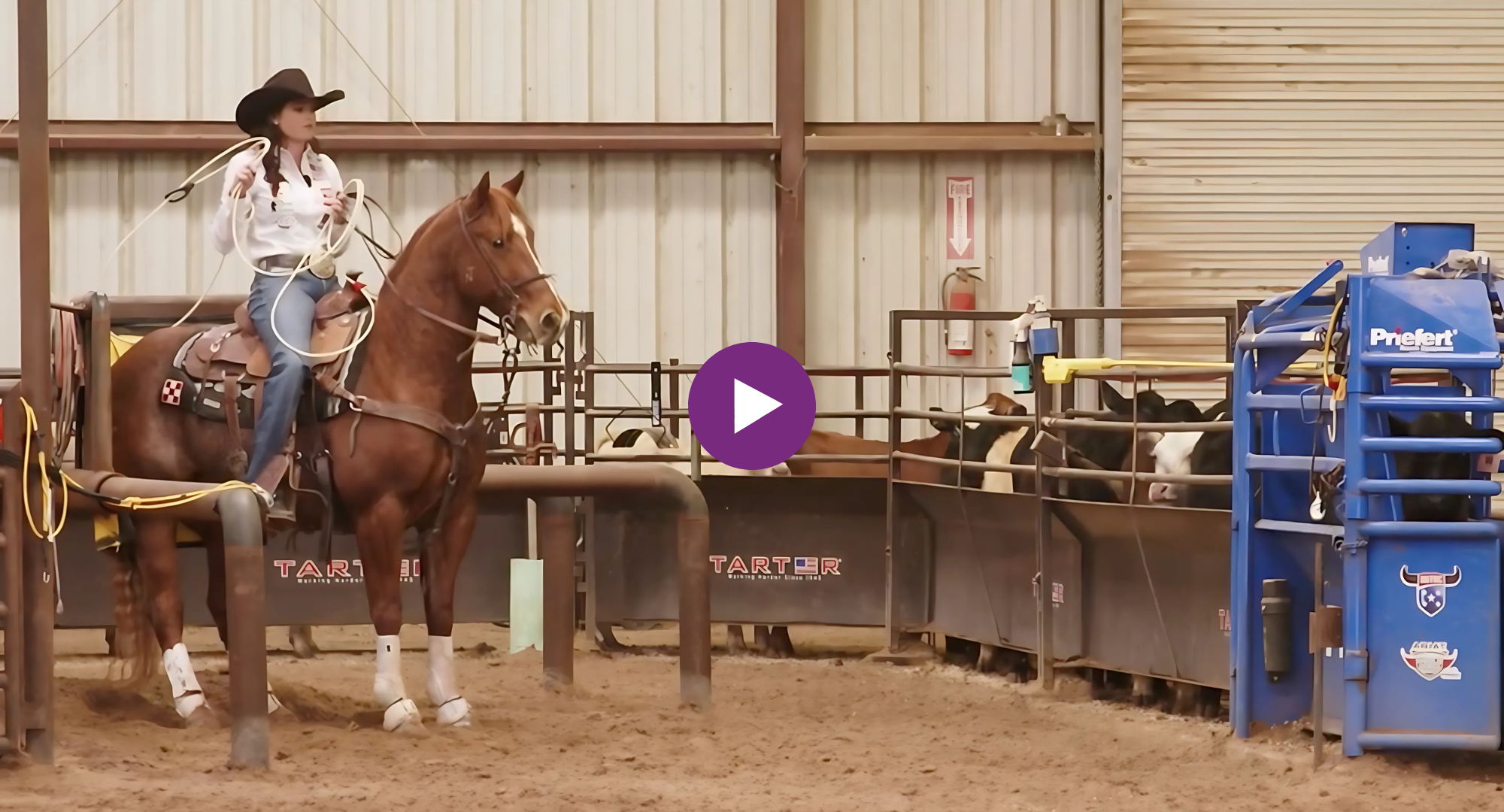You’ve got your rope, your horse, your saddle—all selected and purchased after meticulous research. You’re ready to embark upon a great breakaway career and solid practice is the first step.
But do you have calves to rope?
Owning and using a good set of practice calves can be a key in your development as a breakaway roper and crucial to improving your horsemanship as well.
So what do you need to know before you head to the cow sale?
“Roping Calves 101” is featured in the July 2022 Issue of The Breakaway Roping Journal
Budget Concerns
Look for prices to vary geographically. Expect to pay $350 for dairy calves in the Northwest and $500-$600 for beef calves. In Texas, calves are running around $350-$475. In Wyoming, corriente calves are costing $550-$700 a head.
Leasing can be a legitimate option if you have a supplier in your area. Most charge per head per month and again, costs can vary.
Which Breeds are Best?
Ropers and producers use different breeds for breakaway, but the most popular are dairy calves, like Holsteins and Jerseys, beef cattle and corrientes.
“Every producer is different and it really depends on where you are,” Charity Hoar said. “For beef calves, if they’re bigger, healthier calves, you can get by in the winter, but the colder weather is harder on them. The altitude is harder on them.”
Together with her tie down roping husband, Stuart, Hoar produces bi-monthly jackpots from October to May in Wyoming and northern Colorado. The Hoars also provide cattle to amateur and professional rodeos in their area, including the Mountain States Circuit Finals breakaway in 2021, where Hoar was also a competitor.
“We use beef/corriente crosses in the winter,” she said. “They stay smaller longer and we’ve found the corrientes are honest and try harder—they want to live so you don’t deal with as much loss.”
For practice, Jennifer Casey likes a dairy cross and both ladies agree dairy calves are best for beginners as they are slow and will generally learn and stick to a pattern.
“They give you time to think and correct mistakes for your horse, or you, in the run,” she said. “I like slow and medium calves. But I don’t think you accomplish much with really fast cattle.
“Variety is important—a good set of practice calves make a terrible set of rodeo calves,” she joked. “I don’t mind a slow-starting calf where the gate bangs and the horse has to listen to me and wait.”
Casey is a past WPRA Columbia River Breakaway Roping Champion and one of the cowgirls who helped start the trend of ProRodeos adding breakaway several years ago. She is also a clinician.
Many of her clinics are taught with Seth Hopper, a PRCA circuit champion tie down roper, at Hopper’s place outside of Hermiston, Oregon.
“I love doing clinics with Seth at his place because he has a good feeling arena and the right kind of cattle to learn on,” she said. “If you don’t have the right kind of cattle, I feel like the learning experience isn’t as good.”
And, according to Casey, your arena setup is just as important as the type of calves you’re using.
“Your arena makes a difference, too, as much as the type of calves. If you’ve got a lot of left or right . . . I’ve got a wall on the left on mine, so I don’t get much work that way,” she said. “Both directions are ok to have for practice.”
Breaking In Your Calves
Both ladies wait a minimum of a week before even taking a new set of calves to the arena.
“I give them at least five to seven days on my feed before roping or putting any stress in that regard on them,” Casey said.
“We give them a week to a week and a half in the new environment before we do anything,” Hoar agreed.
She stresses having the right help when you do begin to break the cattle in is a must.
“We have a handful of guys and girls that are our go-to help,” she said. “We string them through, two or three at a time, and we’ll do that two or three times before we ever rope them.”
Casey has a similar process and is also picky about who’s in her arena when she works her calves.
“We run them through two or three times with liners, make sure they know where the end is,” she said, adding that she’s not afraid to put hay or grain at the other end as well. “I want them to really know the out gate.”
Once Hoar is ready to start running the cattle individually, she has her helpers just track them on the first pass.
“The second time through, we have everyone let them all the way out before they go. The beef calves usually are going to start getting stronger by the second or third time anyway,” she said. “The third time, we tell them to go out and make a run.”
“Then we’re done breaking them in.”
Join BreakawayRoping.com where the best ropers in the industry come together to teach the sport like never before.
What to Feed?
Both Hoar and Casey give free choice hay to their calves.
“You have to feed them right if you want them to last,” Casey said. “I give mine a pelleted ration, grain of some sort, and all the hay they want since I don’t have pasture.”
Hoar takes advantage of local feed company NexGen’s extruded corn feed, which is 92% digestible—far higher than other corn and grain products—making it a cost effective option when you’re feeding a big herd.
“It lowers our costs over COB and other grain products and helps their digestive systems,” she said. “We also feed an alfalfa pellet and grain mix.”
Of course, veterinary care is administered as needed, whether through products like Auremycin, a medicated feed additive, or other necessary medications.
Keeping Them Good
Casey has one suggestion for ensuring your herd lasts.
“Own a sled,” she offered, laughing. “I only run my calves two or three times at once, give them good feed and rope the sled.”
Even as a producer, Hoar agreed.
“Unless something is getting really strong, in which case we might rope them two or three times in the week prior to a jackpot. otherwise, once they’re broke in, they’re not touched,” she said. “I have a separate set of calves for my personal practice.” BRJ













